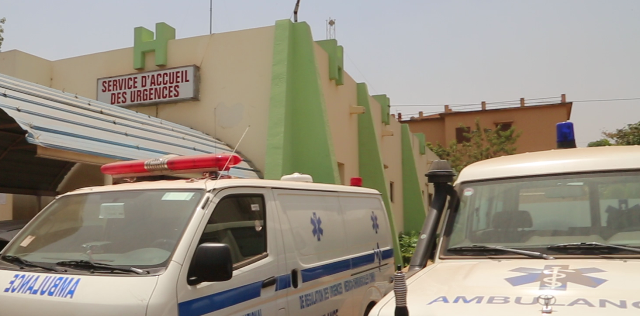The road to Kalabancoro remains under the law of dump trucks, which, within a year, have just killed three students and a teacher traveling (to) or from the University of Kabala, southeast of Bamako. Enough to revive the debate on the current state of this road and the management that is done so far, locally and nationally, the question of accidents that are frequent, involving students. The macabre count continues.
The road to Kalabancoro is the new death place that is being erected before our eyes and in the enormous indifference of almost everyone. Nothing proves it better than the death, on November 9, of the student Abdoulaye Guindo killed by a dump truck as he was returning from the University of Kabala. An umpteenth life brutally shortened after those of two other students and a university professor under the tires of a dump truck. A drama that reveals the other side of a road, which we continue to sound the alarm, as it is true, what is happening there has exceeded alert status. It goes without saying that this is, as is the case in many neighborhoods of Bamako and in the peripheral cities, a road in the shape of a pocket handkerchief, where users drive tight like sardines and in total promiscuity.
Especially that in our latitudes, it’s not an exaggeration to say it, we are getting used to confusing driving a car or a motorbike with looking at the navel, hence becoming grouchy, careless, violent and proud. These are the attitudes that are practiced throughout the day on our roads. But that of Kalabancoro is the leader in the matter, because it is there that tragedies follow one another, raising indignation and anger that blurs time to bury the dead. And the macabre count continues. But until when?
We have said it before and saying it again doesn’t harm anyone: the management that is made, both locally and nationally, of the safety issue raised by this road for students, teachers and other users is a suicidal management. Or the lack of response that we see so far shows something quite disturbing and paradoxical at the local level. That is, the problem is not limited to the fact that there are frequent accidents on this road, in which students or teachers are involved. It also concerns the communal authorities of Kalabancoro who, as is customary in this country, are agitating without taking action.
A few weeks ago, it was rumored that the mayor, to whom some people grant the mitigating circumstance of being new, was in a tussle with the drivers and owners of dump trucks. It is said that the current first town councilor had proposed a plan for the organization of the traffic of these big carriers. A project to which, a refusal was opposed. Result: the carnage continues. But what is not said enough is that, until proven otherwise, the dump trucks remain the main threat on the road to Kalabancoro, going so far as to prevent even those who early in the morning go to work in the administrations and at school. And we are slack-jawed with astonishment by the fact that no one, but really no one, seems to care so far except the students themselves. There is no doubt that the death of Abdoulaye Guindo brings grist to the mill of all those who have repeatedly denounced what is happening, in the press and elsewhere.
However, it is obvious to all or almost all that the urgency today, is to take measures towards monitoring and a constant organization of the traffic on this road by the police and the gendarmerie, which are present in this rural commune. It becomes a necessity when reasonable men and women fail to behave, to conduct themselves on the road that remains a sharing and shared space. Otherwise, what is happening in Kalabancoro is proof that the local authority has no power. Meanwhile, people are left abandoned on a road whose edges are also devoured by sand.
Sidi Ahmed S.
